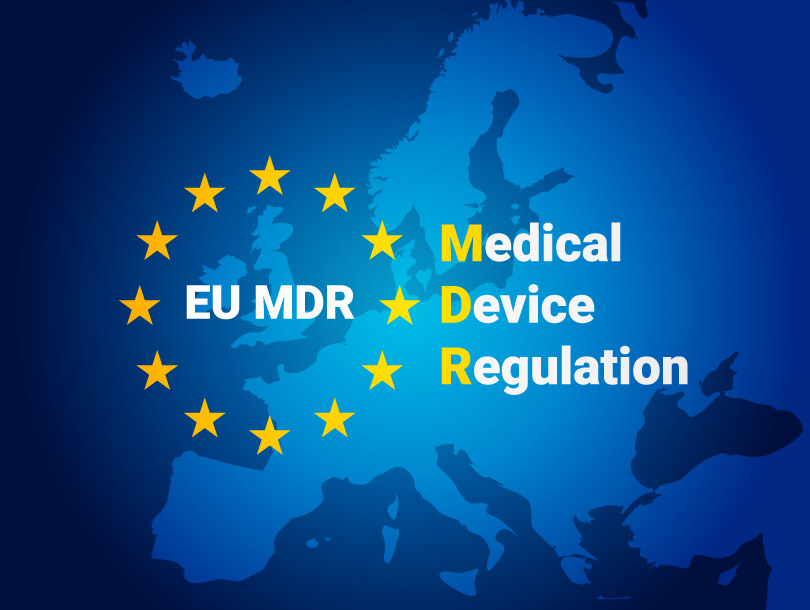18 January 2021
Medical Device Regulations Part 2 — Europe
European Union Medical Device Regulation (EU MDR)
The European Union Medical Device Regulation (EU MDR) 2017/745 was released in May 2017. Organizations were given a 3-year transition period to May 2020, for implementation of this regulation. Due to the global coronavirus pandemic of 2020, the implementation date was delayed by a year to May 2021. The regulation was introduced to resolve and address a number of weaknesses in the two Medical Device Directives (MDD) – the Active Implantable Medical Device (AIMD) Directive – 90/385/EEC established in 1990 and the Medical Device Directive (MDD) – 93/42/EEC established in 1993. The EU MDR 2017/745 consolidated both these directives into one medical device regulation. The EU MDR 2017/745 is a legally binding regulation across the EU member states, just like the US FDA 21 CFR Part 820 Quality System Regulation for Medical Devices is in the United States.
The two previous directives were not legally binding since their inception in the early 1990s. They were more recommendations than requirements. In addition, there was inconsistent implementation across the member states due to the broad and varied interpretations of the directives. Regulatory enforcement and oversight were also lax and varied from member state to member state. The directives did not keep up with technological advancements and developments, and evolving industry practices. Reforms were needed. The EU MDR was established to address these deficiencies with the goal of focusing and increasing the safety and effectiveness of all commercialized medical devices sold in the European Union. Therefore, manufacturers that want to distribute and sell medical devices in the EU need to comply with this regulation and demonstrate compliance and establish technical documentation and evidence demonstrating conformity with the regulation.
Manufacturers will have to either obtain a new CE certificate or update and renew their current CE certificate to demonstrate a Declaration of Conformity to the regulation 2017/745. The letters CE stand for “Conformité Européene” in French literally meaning “European Conformity”. For many products CE marking and a declaration of conformity may only be affixed with proof of a certified quality system and/or product testing based on its end use. The quality systems certification, the CE marking and the declaration of conformity is provided by a “Notified Body” which is an organization appointed by the national accreditation authorities and which “notifies” the European Commission to approve products covered by the European Union Medical Device Regulation. All medical device manufacturers must designate an EU-approved notified body to certify and register their products. For all classes of devices, a detailed technical documentation must be submitted providing objective evidence demonstrating compliance with the Medical Device Regulation’s General Safety and Performance Requirements and with appropriate harmonized standards which include ISO 13485:2016 for quality management systems, ISO14971:2019 for risk management. The basis for compliance to the EU MDR is ensuring compliance with ISO 13485:2016. The goals and intent of the EU MDR 2017/745 are to:
- Establish a robust, transparent, predictable and sustainable regulatory framework for medical devices which ensures a high level of safety and health whilst supporting innovation.
- Set high standards of quality and safety for medical devices to meet common safety concerns
- Provide transparency and adequate access to information, appropriately presented for the intended user, that are essential in the public interest, to protect public health, to empower patients and healthcare professionals and to enable them to make informed decisions, to provide a sound basis for regulatory decision-making and to build confidence in the regulatory system.
- Establish improved traceability of devices including requirements for Unique Device Identifiers (UDI)
- Significantly enhance the effectiveness of the post-market safety of medical devices with improved incident reporting, targeted field safety corrective actions and better monitoring by competent authorities
- Increase the rigor of pre-market and post-market oversight for the production and/or distribution of medical devices in the EU
- Increase the focus on safety and risk management
- To establish higher expectations and specific requirements for notified bodies
- Broaden the scope of the regulation to include other types of products as devices
- Increase the emphasis on clinical evidence and ensure that the data generated in clinical investigations is reliable and robust
- Introduce specific classification rules for medica devices
European Union Invitro Diagnostic Regulation (EU IVDR)
The European Union Invitro Diagnostic Regulation (EU IVDR) 2017/746 was released in May 2017, with a 5-year transition period to May 2022, for implementation.
Like the EU MDR, this regulation was introduced to resolve and address a number of weaknesses in the Invitro Diagnostics Directive (IVDD) 98/79/EC which was established in 1998. The EU IVDR 2017/746 is also a legally binding regulation across the EU member states. A fundamental revision of the Invitro Diagnostic Directive was made in order to establish a robust, transparent, predictable and sustainable regulatory framework that would ensure a high level of safety and health whilst supporting innovation. This Regulation sets high standards of quality and safety for in vitro diagnostic medical devices by ensuring, among other things, that data generated in performance studies are reliable and robust and that the safety of subjects participating in performance studies is protected. The EU IVDR consists of 157 pages. The pages are numbered from page 176 as a continuation of pagination from the EU MDR whose last page number was 175. Pages 176 to 187 is the introduction with 101 recitals, pages 187 to 258 contain 10 Chapters with 113 Articles and pages 259 to 332 contain 15 Annexes. The recitals are explanatory text without any legal implications. The Articles and Annexes are requirements for compliance and conformity with the Annexes providing detailed requirements.
CE Marking for EU MDR and EU IVDR
Products shipped must bear the CE marking to demonstrate compliance with the EU MDR and EU IVDR Regulations. The device must be shipped with a Declaration of Conformity.
